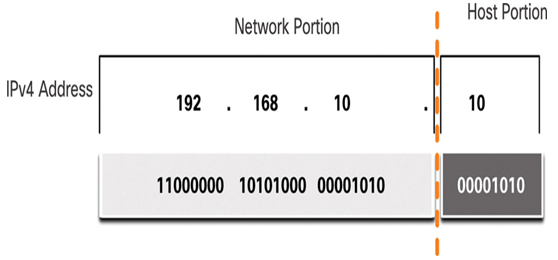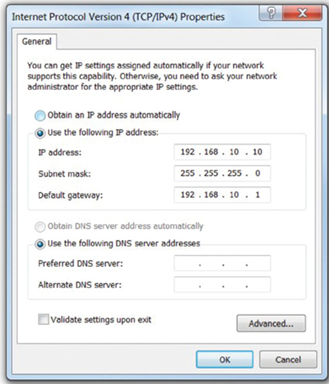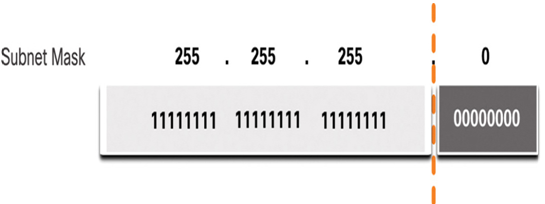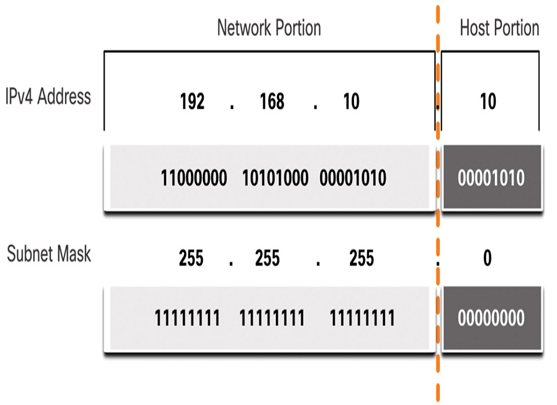Upon completion of this chapter, you will be able to answer the following questions:
• What is the structure of an IPv4 address including the network portion, the host portion, and the subnet mask?
This chapter uses the following key terms. You can find the definitions in the Glossary.
Bob has investigated the current network and has assured Marcy and Vincent that they can use it until he makes the upgrades. Bob has convinced Marcy and Vincent to create a new hierarchical network which will use cloud services. With Bob’s research and explanations of networking, they are sure this is the best move for them. They really appreciate Bob’s knowledge!
You might have a long way to go before you have all of Bob’s knowledge and skill, but I think you are on the right path! This module will dive deeper into IPv4 addressing. Ready? Keep reading.
This topic will present the IPv4 address structure.
Network and Host Portions (23.1.1)
An IPv4 address is a 32-bit hierarchical address that is made up of a network portion and a host portion. When determining the network portion versus the host portion, you must look at the 32-bit stream, as shown in Figure 23-1.

Figure 23-1 Network and Host Portion of an IPv4 Address
The bits within the network portion of the address must be identical for all devices that reside in the same network. The bits within the host portion of the address must be unique to identify a specific host within a network. If two hosts have the same bit-pattern in the specified network portion of the 32-bit stream, those two hosts will reside in the same network.
But how do hosts know which portion of the 32-bits identifies the network and which identifies the host? That is the role of the subnet mask.
As shown in Figure 23-2, assigning an IPv4 address to a host requires the following:
• IPv4 address – This is the unique IPv4 address of the host.
• Subnet mask- This is used to identify the network/host portion of the IPv4 address.

Figure 23-2 IPv4 Addressing on a Windows PC
Note:
A default gateway IPv4 address is required to reach remote networks and DNS server IPv4 addresses are required to translate domain names to IPv4 addresses.
The IPv4 subnet mask is used to differentiate the network portion from the host portion of an IPv4 address. When an IPv4 address is assigned to a device, the subnet mask is used to determine the network address of the device. The network address represents all the devices on the same network.
Figure 23-3 displays the 32-bit subnet mask in dotted decimal and binary formats.

Figure 23-3 32-bit Subnet Mask
Notice how the subnet mask is a consecutive sequence of 1 bits followed by a consecutive sequence of 0 bits.
To identify the network and host portions of an IPv4 address, the subnet mask is compared to the IPv4 address bit for bit, from left to right as shown in Figure 23-4.

Figure 23-4 Subnet Mask Compared to IPv4 Address
Note that the subnet mask does not actually contain the network or host portion of an IPv4 address, it just tells the computer where to look for the part of the IPv4 address that is the network portion and which part is the host portion. The actual process used to identify the network portion and host portion is called ANDing.
